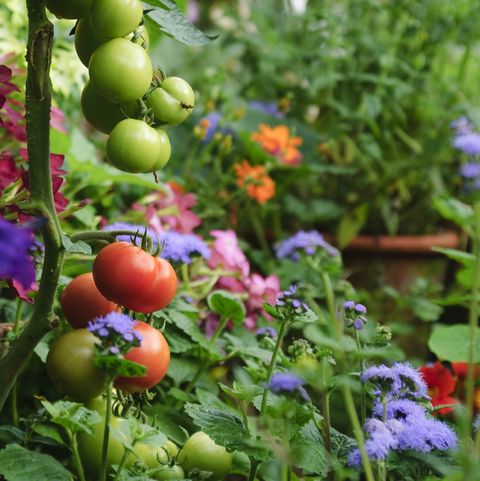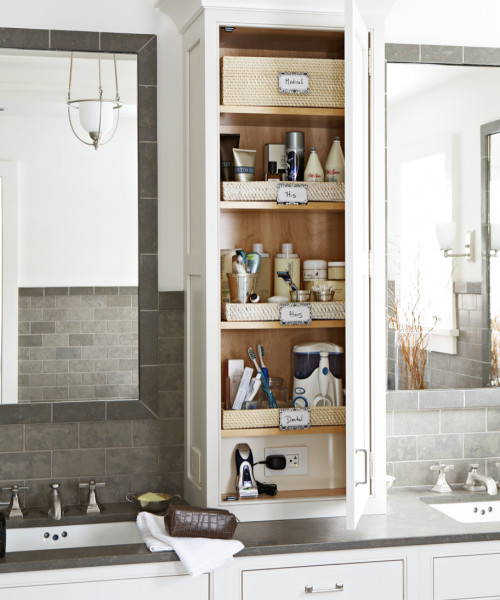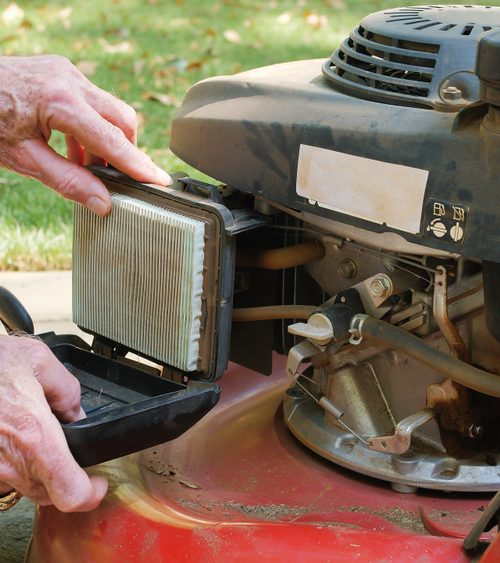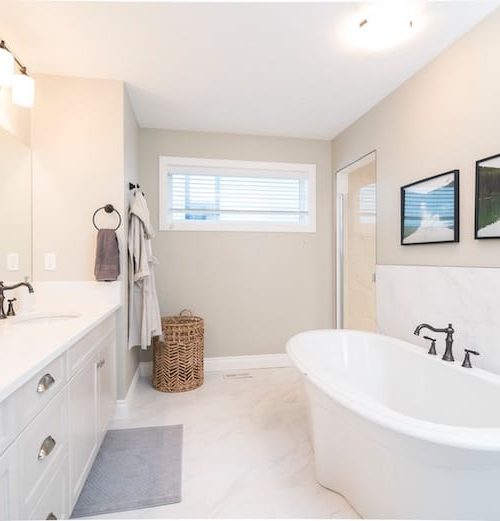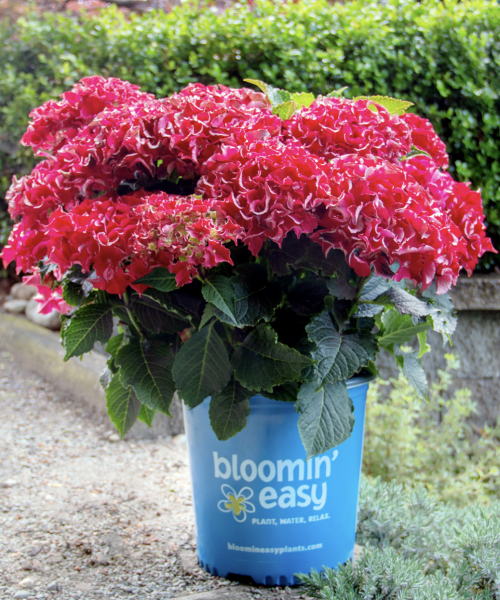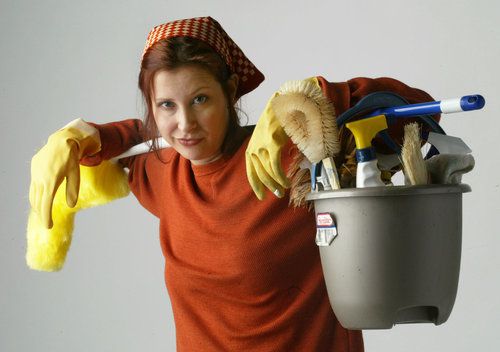By Kiersten Willis, The Atlanta Journal-Constitution
Troy Warren for CNT #HomeGarden
Cooler weather doesn’t mean your colorful garden is finished. It just means there are new ways to add brightness to your yard.
For people who are hoping to start their first garden in the autumn, there are a few tips you can learn from the Georgia experts who spoke to The Atlanta Journal-Constitution.
Kara Ziegler, horticulturist and regional manager at Duluth-based Pike Nurseries, offers some lessons on florals. While Greg Key, president and CEO of south Georgia gardening supplies and seed company Hoss Tools has some recommendations for vegetables.
Get started as soon as you can
Ziegler said that as soon as summer annuals and vegetables have run their course, you can begin soil prep. That involves harvesting tomatoes, peppers, zucchini and relishing the final summer blooms from begonias, marigolds and petunias.
Afterward, it’s time to “nurture the soil.”
“Turn the soil, making sure any small leaves or plant material is turned down and remove any sticks or rocks,” Ziegler said. “This is also the perfect time to improve the soil quality by providing rich-organic matter that provides nutrients and breaks up our dense clay soil.”
A nutrient-rich compost such as an equal blend of worm castings and a planting mix is good for optimal soil. Ideally, work the mixture into the top 6-12 inches of soil.
“It’s fun to pop in a few signs of fall like mums and asters shortly after Labor Day. Usually by late September and early October, fall planting is in full swing with cooler temps,” Ziegler said.
For vegetables, Key said the first step is to clean up all string crops and dispose of them in a compost pile.
“The undisposed crops can harbor insects and disease pathogens,” he said. Afterward, till the soil to kill the weeds. Doing so will help you get a clean seedbed. The last step is adding compost or a quality organic fertilizer seven to 10 days before planting.
Key said planting is typically planned around the first frost. In Georgia, that usually occurs in mid-November.
“When planting the fall garden, you have to make sure those heat-loving vegetables will be mature and harvested before the frost,” he said.
That’s when Douglasville resident Tanisha Bridges plans to establish her new vegetable garden.
“This is my second year attempting a fall garden. Last year I had great growth but the aphids took over because I wasn’t consistent. So this year I’m excited to try again,” she said. “I still have sunflowers coming up all over. And I’ll probably just buy my mums because they’re so cheap locally.
“I’m thinking to start in late August and have everything transplanted by mid-September,” added Bridges, a member of the SE ATL Gardeners Facebook group. “The first frost is estimated for the first week of November so I’d like them established and happy in the ground by then.”
Want variety? Fall is your friend
Cooler weather can be a good time to add variety to your garden. Ziegler said the season is the best time to plant almost everything.
“The warm soil and cool nights allow for plants’ roots to establish more easily without heat stress,” she said. “Spruce up your garden with perennials that come back each year such as sun-loving echinacea and rudbeckia, and shade-loving helleborus, heuchera and autumn ferns. These perennials are especially perfect for fall because of their autumn colors including red, yellow, orange and purple.”
It’s also an ideal season to begin thinking ahead for the spring.
“Fall is the perfect time to add shrubs like blooming hydrangeas and azaleas; while these shrubs generally bloom in spring, planting them in fall lets the plant establish so it’s strong and healthy for copious blooms next spring,” Ziegler added.
You can also plant evergreen shrubs, which will allow you to have color year-round without having to think about planting as much. Ziegler suggests popular choices such as Ligustrum Florida Sunshine and Abelia Kaleidoscope, both of which are lime green. Loropetalum features purple leaves, while Japanese maples, she said, “are a must-have along with fruit trees for a backyard orchard.”
Of course, you can also rely on colorful florals that will attract birds. That’s what Atlanta resident Susan Paulukonis plans to do. She’s also a member of the SE ATL Gardeners Facebook group.
“We love swamp sunflower (helianthus angustifolia), river oats (chasmanthium latifolium), and witchhazel (hamamelis) for bird-attracting fall color,” she said. “We already have quite a bit of each, but will be dividing and moving some of the river oats and sunflower around this fall. We plant foxgloves (digitalis) in pots in the fall for amazing late spring blooms each year.”
Vegetables can also provide variety. Thanks to Georgia’s weather, there’s also a surprising mixture of vegetables that can be grown in the fall. Key said some veggies grow better later in the year.
“For years we thought that vegetables could only grow in the spring,” he said. “While some actually grow better in the late summer/early fall, just about all vegetables can be grown in the late summer/early fall here in Georgia.”
Corn, winter squash including butternut and pumpkin, okra, tomatoes, beans and cowpeas are among the favorites at Hoss Tools for late summer and early fall.
“Also, plant those pumpkins for Halloween,” he added.
Rookies and established green thumbs
Whether you’re a novice or an expert gardener, there are some things that Key and Ziegler both recommend.
Beginning vegetable gardeners should take soil samples and adjust the PH to make sure it’s in the right range for what they’re planting. Dummies.com said you’ll have to add ground limestone for overly acidic soil and soil sulfur if it’s too alkaline.
“Make sure you have taken a soil sample and make adjustments to the PH of the soil to make sure it’s in the correct range for the plants you are growing,” he said.
Key suggests those at the intermediate level learn to pinpoint common garden pests to control them. They can include squash vine borers and leaf-footed bugs, which UGA Extention said are the most difficult to control. Key also advises starting a worm compost bin since “worms are great at doing all the hard work of breaking all the plant material down into worm castings that can be incorporated back into the garden beds.”
He also warns about certain disease-spreading insects.
“Bug populations are higher in late summer/early fall,” he said. “Some insects such as Thrips spread diseases. Also, with our heat and humidity, we face higher disease pressure as the year goes on. Powdery and Downey mildew is more prevalent in late summer/early fall. There have been varieties bred to resist such problems and to grow successfully in the fall. Plant such varieties as gold star summer squash and Parisian gherkin cucumber.
Key advises using drip irrigation when possible. Doing so not only conserves water but diminishes the risk of disease. Putting water directly on the roots keeps the foliage healthier.
People at the expert level can take more permanent steps. They include installing a medicinal garden with yarrow and aloe vera, the former of which can add color. Both can aid with minor scrapes, cuts and burns.
For floral gardens, Ziegler advises beginners to monitor sunlight.
“Always look at how much direct sunlight your planting spot gets and choose plants accordingly. No matter how much care you give a plant if it’s getting too much or too little sunlight, it simply won’t thrive,” she said.
Intermediate gardeners are encouraged to try new plants and experiment with different combinations. For example, mix in asters with mums for a blend of flowers and texture. You can also plant things in new places, such as the bathroom.
Expert gardeners can look beyond flower colors for their gardens. They can think about the timing of blooms, sizes and growth habits, Ziegler said.
“A good garden design will incorporate plants that thrive in each season for a year-long show of flowers and foliage. And just like composing the shot for a photo or a scene for a painting, think about the background, middle ground, and foreground,” she said. “Trees and tall shrubs anchor the design and provide a backdrop to smaller shrubs and perennials in the middle ground, then prolific-blooming annuals and other low-growing plants catch the eye in the foreground.”
Textures and leaf shapes can also add variety. Smooth, glossy camellia shrub leaves are a good contrast for rough, needle-like golden thread-branch cypress conifer.
Avoiding common mistakes
No matter your skill level, blunders are possible.
One that vegetable gardeners often make is believing fall marks the end of gardening season. Key said it’s actually a critical period.
“This is a very crucial time to set the stage for a great garden next season,” he said. “It is very important to remove the old plants and roots from the garden as they die off. Do not keep them in the garden past their prime. This helps prevent diseases from taking hold and the dying plant from becoming a magnet for mold and fungus.”
“Secondly, don’t leave the soil bare,” he added. “This is an open invitation to weeds gaining a foothold in the garden. It is recommended to plant a cover crop or cover the area with a tarp if you are not ready to plant your vegetables.”
When planting flowers, similar mistakes can occur.
Ziegler said the biggest is not amending the soil.
“Think about when you dig a hole, the soil can be rock hard and difficult to work,” she said. “Our clay soil doesn’t drain well, either. Now imagine a new plant trying to spread its tender new roots through that compact soil. It’s critical for success that the soil is thoroughly amended so it’s much lighter which allows roots to easily establish and provides proper drainage so roots don’t drown in too much water. Then after you plant, apply a 2-3-inch layer of mulch. This will help keep down weeds and provide insulation for plant roots if we go through a freeze during winter.”
Surprises galore
Vegetable gardeners should expect the unexpected, especially when the weather is unpredictable.
With some years being hotter and drier than others, plants can grow more quickly, according to Key. That can throw off the maturity date on seed packaging. In unseasonably cold weather, maturing and production can take longer.
“Give yourself a few cushion days to accommodate for temp fluctuations. Plan on all your summer vegetables to mature out by the first of November, before a chance of frost,” he said.
Florals, meanwhile, have unexpected uses.
Multi-use plants such as rosemary, thyme and oregano can serve as foliage accents in a container garden and as fresh herbs for cooking. Don’t forget about house plants when gardening, either. Ziegler said most thrive in outdoor containers in early fall. They can transition back indoors when the nighttime temperature is consistent with that of your home.
Crotons are a favorite at Pike. The indoor/outdoor plants each have unique foliage color and shape ideal for fall displays.
Best planting times
Despite heat remaining in Georgia into September, experts say there are still flowers and vegetables you can plant.
Greg Key of Hoss Tools offers examples of when you can plant vegetables for fall:
broccoli and cauliflower: September 1
beans: Mid-September
beets: October 1
radishes: October 1
carrots: Mid-October
Katie Ziegler of Pike Nurseries said many summer-loving plants transition well from summer to fall. Often, they bloom into late October or early November until the first frost. They include:
perennial lantana
echinacea
annual zinnias
shrubs, such as roses
It’s recommended to wait until late September to plant annuals that adore coolness. They include:
pansies
violas
snapdragons
In Other NEWS


























